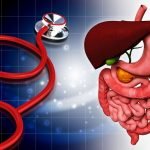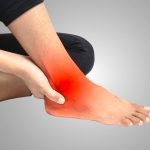Healthy Conception and Pregnancy: The Role of Nitric Oxide and Other Critical Factors
CHRIS D. MELETIS, ND
Modern couples face many obstacles to becoming pregnant or giving birth to a healthy baby, and the distribution of contributing factors appears to be nearly equal between male and female. According to the Centers for Disease Control and Prevention (CDC), approximately 12% of women aged 15 to 44 years in the United States struggle with becoming pregnant or carrying a pregnancy to term.1
For many couples, becoming pregnant in the first place is the initial and ultimate hurdle they must overcome. Yet, producing a child in today’s world means more than growing a new human on fertile ground. The challenge is to produce an optimally healthy human. An overly simplified example that I share with my patients who are trying to conceive is the concept of planting seeds from a mature sunflower grown in an urban parking lot, in a field along a highway, or in an organic field. Would the height, health, and chemical and nutrient profile of the plants growing in these different areas be the same? More than likely, the sunflowers growing in an organic field would be the healthiest. In the same way, children “planted” in a healthy environment are likely to end up being the healthiest.
This is easier said than done. A truly pure, organic human free of toxins is probably impossible to find in today’s toxic world. Prior to the moment of intimacy and conception, both parents are toxic. Their net accumulation of toxin exposure balanced with detoxification will dictate whether they can conceive or have a healthy pregnancy. Our kids are essentially our coal miners’ canaries. The sheer number of children who are being diagnosed with autism point to environmental, genetic, epigenetic, and lifestyle factors gone awry. Twenty years ago, conservatively, 1 in 150 children were diagnosed with autism spectrum disorder (ASD), according to the CDC. Now, at least 1 in 54 children are diagnosed with ASD.2 A recent study of twins found that approximately half of ASD cases were caused by environmental factors.3 Evidence indicates that maternal exposure to tobacco smoke, alcohol, air pollution, pesticides, endocrine-disrupting chemicals, and heavy metals, as well as maternal obesity and deficiencies in micronutrients or fatty acids may all increase the risk of giving birth to a child with autism.3
This article is not about autism per se. I am using this concept as one example of what happens when susceptible individuals are exposed to unfavorable substances while in the womb. In this article, I will discuss critical factors that must be addressed in order for parents to conceive and give birth to a healthy child and plant the seed for future good health.
Nitric Oxide’s Role in Conception & Pregnancy
Even something as simple as insufficient nitric oxide can be the proverbial straw that breaks the camel’s back in terms of infertility or the health of the unborn child. Nitric oxide is a free radical that has beneficial effects in the body. For example, nitric oxide signals the smooth muscle surrounding the endothelium of the blood vessels to relax, leading to vasodilation and enhanced blood flow. This ability can aid in conception, as it improves erectile function.4 However, levels of nitric oxide and its precursor, nitrate, can be lowered by such factors as pollution, heavy metals, other toxins, and aging.
Nitric oxide (NO) is critical for many aspects of conception and pregnancy. It is involved in several aspects of sperm health, such as motility and viability.5 NO also plays an important regulatory role in many female reproductive processes, including ovulation, implantation, and a healthy pregnancy that is followed by successful labor and delivery.6 The mechanism by which the fertility drug clomiphene citrate increases the ovulation and pregnancy rate in women with polycystic ovary syndrome may involve increasing levels of nitric oxide.7 Furthermore, during follicle development, levels of circulating NO-products increase.6 On the other hand, levels decrease immediately following ovulation.6 Nitric oxide synthase (NOS) is an enzyme that promotes the synthesis of NO by converting L-arginine to L-citrulline. There are several isoforms of this enzyme, including inducible NOS (iNOS). Blocking iNOS leads to a 50% reduction of ovulation, whereas NO completely reverses the effects of this inhibition.6
Nitric oxide is also involved in the interleukin-1 (IL-1) system of the ovaries, which plays a role in ovulation.8 IL-1 is the trigger for several ovulation-associated events, such as the production of prostaglandins and progesterone, glycosaminoglycan generation, and increased vascular permeability.8 Furthermore, NO controls endometrial functions including endometrial receptivity, implantation, and menstruation.9 Therefore, raising NO levels may promote fertility, while the blockage of NO might act as a contraceptive.6 NO is also involved in uterine contractility, as evidenced by its role during gestation. During gestation, NO synthesis increases in the myometrium (middle layer of the uterine wall).6 However, when it is time to give birth, NO synthesis declines, allowing for contractions during labor.6 NO-donor agents have been used to stop premature labor.6 Unlike the myometrium, the cervix has low levels of NO during gestation.6 As the pregnancy reaches term, cervical NO levels rise.6 Agents that lead to increased NO production are used as cervical ripening substances.6
NO, Gestational HT, & Preeclampsia
NO serves as a powerful vasodilator of blood vessels. It also blocks platelet aggregation. Consequently, low NO levels during gestation are associated with the development of gestational hypertension and preeclampsia.6 Hypertension during pregnancy can lead to preeclampsia and put the health and life of both mother and baby at risk. Gestational hypertension and preeclampsia are associated with fetal growth restriction and preterm birth.10 A double-blind, placebo-controlled study of pregnant women investigated the effects of daily administration of beetroot juice containing nitrate as compared to a placebo beetroot juice containing no nitrate.10 Women drinking the beetroot juice with nitrate experienced significant reductions in diastolic blood pressure.
Environmental Toxins & Pregnancy
Greater than 90% of individuals in the United States have detectable levels of pesticides or pesticide metabolites in their urine or blood samples.11 There is a strong correlation between exposure to environmental toxins and infertility. Research suggests that the advice to “eat your fruits and vegetables” should be changed to “eat your organic fruits and vegetables.” A study of 325 women found that the participants who ate the most fruits and vegetables with high-pesticide residue were less likely to become pregnant and less likely to have a live birth after undergoing infertility treatment with assisted reproductive technologies.11 On the other hand, research has found that consuming organic fruits and vegetables significantly lowers the risk of preeclampsia in pregnant women.12 It is thought that this is due to not only reduced pesticide residues but also increased nutrient content of organic food.12
In men, eating fruits and vegetables with low-to-moderate pesticide residues is associated with a higher total sperm count and sperm concentration.13 Conversely, eating fruits and vegetables with a high pesticide residue is not associated with sperm quality.13 According to the study authors, “This suggests that pesticide residues may modify the beneficial effects of fruit and vegetable intake on semen quality.”
Both indoors and outdoors, we’re exposed to pollutants that can affect fertility. Indoor air pollutants have been linked to preeclampsia and eclampsia.14 In a mouse study, maternal exposure to substances such as paint thinner was associated with impaired development and behavior in the offspring.15 Outdoor air pollution is also associated with lower fertility rates and reduced clinical pregnancy rates, as well as a higher risk of miscarriage.16,17 In women who struggle with infertility, exposure to higher levels of air pollution while undergoing in–vitro fertilization (IVF) was associated with lower live–birth rates and increased miscarriage rates.17
In addition to avoiding toxin exposure, detoxification can help, such as supporting the nitrate–to–nitrite–to–nitric oxide pathway. Substances that increase NO levels, such as beetroot juice, can support detoxification pathways in the body, assisting with the removal of pollutants and toxins.18
Exercise & NO Levels During Pregnancy
Exercise during pregnancy can have beneficial effects for both the mother and unborn child. These beneficial effects are due in part to increases in NO levels. Research shows that a combined resistance and aerobic exercise training program in the second half of pregnancy results in a 2-fold increase in endothelial NOS expression and a 4-fold increase in NO synthesis in human placental tissue.19
Augmenting NO When Trying to Conceive
Supporting the nitrate–to–nitrite–to–nitric oxide pathway is critical to ensuring the ability to conceive and carry a baby to term. In my clinical practice I always recommend to patients, “Test, don’t guess.” Levels of NO can be determined using nitric oxide test strips. Then, if the results warrant, the easiest way to replenish levels of NO is through supplementation with a formula that includes nitrate-rich substances, such as beetroot and pomegranate fruit extracts. I covered the beneficial effects of beetroot earlier in this article; but, to summarize, it can support healthy blood pressure in pregnant women. Pomegranate may have similar effects.20 Using an animal model of preeclampsia, it was determined that pomegranate can increase placental levels of NO, as well as reduce diastolic, systolic, and mean arterial blood pressure in pregnant rodents.21
Other Critical Factors in Fertility & Healthy Pregnancies
A number of other factors play a role in successful conception, birth, and postnatal health of the baby. A detailed discussion of these factors is outside the scope of this article. However, because they are critical components of a healthy pregnancy and promote the ongoing health of the child throughout life, they deserve to be summarized.
Diet & Lifestyle
The saying “You are what you eat” might be a cliché, but there’s also a lot of truth in it. In fact, the saying could be rewritten to: “Your unborn child is what you eat.” In fact, we can take this 1 step further and say, “Your grandchildren are what you eat,” since we now know that epigenetic effects resulting from the diet consumed by either the mother or father can affect not only their offspring but also the next generation.22,23
Studies have shown that what you eat can impact fertility. I’ve already talked about the importance of consuming organic fruits and vegetables. Other research indicates that a dietary pattern consisting of high intakes of fish, chicken, fruit, cruciferous and leafy green vegetables, tomatoes, legumes, and whole grains improves a man’s sperm motility.24 Men who were in the highest quartile for eating this type of diet were shown to have 11.3% higher progressively motile sperm compared with men who ate less of these types of foods.
In regards to lifestyle factors that affect fertility, avoiding cigarettes and alcohol while trying to conceive are 2 of the most important.25 In fact, enhancing fertility can be an ideal motivation for giving up cigarettes.
Antioxidants & Other Nutrients
Supplementation with specific antioxidants can support fertility and a healthy pregnancy. Many factors can cause an excessive amount of oxidative stress in the body, including toxins, aging, psychological stress, obesity, excessive caffeine consumption, raised temperature in a man’s scrotum, not getting enough exercise, and impaired insulin levels due to processed food intake or polycystic ovary syndrome.26-28
This increase in oxidative stress can reduce the chances of becoming pregnant or carrying a baby to term. Therefore, a good antioxidant supplement may be warranted to protect against oxidative stress while trying to conceive.
Antioxidants can shield eggs in a woman’s ovarian reserve from the damage caused by oxidative stress. For example, melatonin supplementation can enhance egg maturation during IVF treatments.29 Coenzyme Q10 (CoQ10) is another antioxidant that can improve egg quality. In a human trial, women given CoQ10 had higher fertilization rates and more high-quality embryos.30 Additionally, CoQ10 has been shown to increase the number of ovarian follicles and enhance ovulation.31 Raising levels of other antioxidants, such as amino acids, vitamins, and minerals, may play a role in supporting regular cycles and making ovulation more predictable. Some examples include myo-inositol, which increases the rate of ovulation,32 and N-acetylcysteine, which improves ovulation and pregnancy rates.33
Prenatal antioxidants should include the active form of folate, 5-methyltetrahydrofolate (5-MTHF). Many women are unable to absorb folic acid or folate from food.34 This is because dietary folic acid or folate is not biologically active until the enzyme methylenetetrahydrofolate reductase (MTHFR) helps convert them to the metabolically active form, 5-MTHF. However, many people have polymorphisms in this enzyme that don’t allow them to generate enough of it.35 One particular genetic variant of MTHFR has been linked to a lower number of live births after IVF.34 Direct supplementation with 5-MTHF can bypass this polymorphism, allowing for optimal absorption of folate.35
Antioxidants are also important for male fertility. Researchers studied 101 infertile men who had abnormal semen.36 The men used a proprietary antioxidant supplement containing L-carnitine, CoQ10, vitamin E, lycopene, N-acetyl L-cysteine, vitamins A, D3, C, and K, B-complex vitamins, iodine, selenium, zinc, copper, manganese, chromium, molybdenum, grape seed extract, benfotiamine, and L-arginine. Three months of supplementation with these antioxidants 3 times daily led to a 33% increase in sperm count and a 122% increase in sperm motility compared to baseline. Sperm morphology was also healthier after supplementation, and DNA fragmentation rate was reduced by 20%.
Postnatal Support for Mother & Offspring
Mitochondria are important organelles in the cell. They are essentially the cells’ “gas pumps,” as they produce ATP, the body’s cellular fuel. Nicotinamide adenine dinucleotide (NAD+) is an essential coenzyme needed for healthy metabolism and energy generation in each of our cells. NAD+ serves as the primary electron donor in the mitochondrial respiratory chain.37 Supplementing with nicotinamide riboside (NR), a unique and naturally occurring precursor to NAD+, is highly effective at raising NAD+ levels and improving mitochondrial health.38,39
In the postpartum period, NAD+ may be dysregulated in the mother.40 NR supplementation to rodent mothers after giving birth was found to increase lactation and nursing behaviors.40 In other animal studies, NR supplementation to new mothers triggered an increase in macronutrients, micronutrients, and brain-derived neurotrophic factor (BDNF) in breast milk.40 BDNF is an important molecule involved in learning and memory. Offspring of rodent mothers given NR showed optimal glycemic control, size at weaning, and efficiency of neuronal transmissions.40 The benefits continued in the offspring throughout life. Adult offspring of mothers supplemented with NR during nursing also showed improved physical performance and spatial memory, less anxiety, delayed onset of behavioral immobility, and increased adult hippocampal neurogenesis.40
Conclusion
Conceiving a child in today’s toxic world is no easy task. The dance of conception should be simple, yet for many couples it is riddled with hurdles. Factors like low nitric oxide levels can affect all levels of the pregnancy pathway, from erectile function to fertility to carrying a baby to term. Conceiving a healthy baby involves testing for NO levels and increasing concentrations when warranted through the use of beetroot and pomegranate. Furthermore, avoiding exposure to toxins, supplementing with antioxidants, eating a healthy diet, and increasing NAD+ levels by supplementing with nicotinamide riboside can keep mother, father, and baby healthy at all stages from conception through birth.
References
1.Centers for Disease Control and Prevention. Infertility FAQs. Last reviewed January 16, 2019. CDC Web site.https://www.cdc.gov/reproductivehealth/infertility/index.htm. Accessed December 18, 2020.
2.Centers for Disease Control and Prevention. Data & Statistics on Autism Spectrum Disorder. Last reviewed September 25, 2020. https://www.cdc.gov/ncbddd/autism/data.html. Accessed December 18, 2020.
3. Fujiwara T, Morisaki N, Honda Y, et al. Chemicals, Nutrition, and Autism Spectrum Disorder: A Mini-Review. Front Neurosci. 2016;10:174.
4. Burnett AL. The role of nitric oxide in erectile dysfunction: implications for medical therapy. J Clin Hypertens (Greenwich). 2006;8(12 Suppl 4):53-62.
5. Miguel-Jiménez S, Carvajal-Serna M, Calvo S, et al. Does Melatonin Exert Its Effect on Ram Sperm Capacitation Through Nitric Oxide Synthase Regulation? Int J Mol Sci. 2020;21(6):2093.
6. Maul H, Longo M, Saade GR, Garfield RE. Nitric oxide and its role during pregnancy: from ovulation to delivery. Curr Pharm Des. 2003;9(5):359-380.
7. Sylus AM, Nandeesha H, Sridhar MG, et al. Clomiphene citrate increases nitric oxide, interleukin-10 and reduces matrix metalloproteinase-9 in women with polycystic ovary syndrome. Eur J Obstet Gynecol Reprod Biol. 2018;228:27-31.
8. Díaz Flores M, Ortega-Camarillo C, Rosales-Torres AM, et al. Nitric oxide as main effector in the interleukin-1 system in ovulation. Gac Med Mex. 2001;137(4):291-302. [Article in Spanish]
9. Chwalisz K, Garfield RE. Role of nitric oxide in implantation and menstruation. Hum Reprod. 2000;15 Suppl 3:96-111.
10. Ormesher L, Myers JE, Chmiel C, et al. Effects of dietary nitrate supplementation, from beetroot juice, on blood pressure in hypertensive pregnant women: A randomised, double-blind, placebo-controlled feasibility trial. Nitric Oxide. 2018;80:37-44.
11. Chiu YH, Williams PL, Gillman MW, et al. Association Between Pesticide Residue Intake From Consumption of Fruits and Vegetables and Pregnancy Outcomes Among Women Undergoing Infertility Treatment With Assisted Reproductive Technology. JAMA Intern Med. 2018;178(1):17-26.
12. Glibowski P. Organic food and health. Rocz Panstw Zakl Hig. 2020;71(2):131-136.
13. Chiu YH, Gaskins AJ, Williams PL, et al. Intake of Fruits and Vegetables with Low-to-Moderate Pesticide Residues Is Positively Associated with Semen-Quality Parameters among Young Healthy Men. J Nutr. 2016;146(5):1084-1092.
14. Agrawal S, Yamamoto S. Effect of indoor air pollution from biomass and solid fuel combustion on symptoms of preeclampsia/eclampsia in Indian women. Indoor Air. 2015;25(3):341-352.
15. Malloul H, Mahdani FM, Bennis M, Ba-M’hamed S. Prenatal Exposure to Paint Thinner Alters Postnatal Development and Behavior in Mice. Front Behav Neurosci. 2017;11:171.
16. Frutos V, González-Comadrán M, Solà I, et al. Impact of air pollution on fertility: a systematic review. Gynecol Endocrinol. 2015;31(1):7-13.
17. Checa Vizcaíno MA, González-Comadran M, Jacquemin B. Outdoor air pollution and human infertility: a systematic review. Fertil Steril. 2016;106(4):897-904.e891.
18. Clifford T, Howatson G, West DJ, Stevenson EJ. The potential benefits of red beetroot supplementation in health and disease. Nutrients. 2015;7(4):2801-2822.
19. Ramírez-Vélez R, Bustamante J, Czerniczyniec A, et al. Effect of exercise training on eNOS expression, NO production and oxygen metabolism in human placenta. PLoS One. 2013;8(11):e80225.
20. Kazemirad H, Kazerani HR. Nitric oxide plays a pivotal role in cardioprotection induced by pomegranate juice against myocardial ischemia and reperfusion. Phytother Res. 2018;32(10):2069-2077.
21. Wang Y, Huang M, Yang X, et al. Supplementing punicalagin reduces oxidative stress markers and restores angiogenic balance in a rat model of pregnancy-induced hypertension. Korean J Physiol Pharmacol. 2018;22(4):409-417.
22. Vågerö D, Pinger PR, Aronsson V, van den Berg GJ. Paternal grandfather’s access to food predicts all-cause and cancer mortality in grandsons. Nat Commun. 2018;9(1):5124.
23. Kaati G, Bygren LO, Edvinsson S. Cardiovascular and diabetes mortality determined by nutrition during parents’ and grandparents’ slow growth period. Eur J Hum Genet. 2002;10(11):682-688.
24. Gaskins AJ, Colaci DS, Mendiola J, et al. Dietary patterns and semen quality in young men. Hum Reprod. 2012;27(10):2899-2907.
25. Olatunbosun OA, Edouard L, Pierson RA. How important is health promotion in the lifestyle of infertile couples? Clin Exp Obstet Gynecol. 1997;24(4):183-186.
26. Mou D, Wang J, Liu H, et al. Maternal methyl donor supplementation during gestation counteracts bisphenol A-induced oxidative stress in sows and offspring. Nutrition. 2018;45:76-84.
27. Yang M, Lee HS, Hwang MW, Jin M. Effects of Korean red ginseng (Panax Ginseng Meyer) on bisphenol A exposure and gynecologic complaints: single blind, randomized clinical trial of efficacy and safety. BMC Complement Altern Med. 2014;14:265.
28. Ilacqua A, Izzo G, Emerenziani GP, et al. Lifestyle and fertility: the influence of stress and quality of life on male fertility. Reprod Biol Endocrinol. 2018;16(1):115.
29. Kim MK, Park EA, Kim HJ, et al. Does supplementation of in-vitro culture medium with melatonin improve IVF outcome in PCOS? Reprod Biomed Online. 2013;26(1):22-29.
30. Xu Y, Nisenblat V, Lu C, et al. Pretreatment with coenzyme Q10 improves ovarian response and embryo quality in low-prognosis young women with decreased ovarian reserve: a randomized controlled trial. Reprod Biol Endocrinol. 2018;16(1):29.
31. El Refaeey A, Selem A, Badawy A. Combined coenzyme Q10 and clomiphene citrate for ovulation induction in clomiphene-citrate-resistant polycystic ovary syndrome. Reprod Biomed Online. 2014;29(1):119-124.
32. Emekçi Özay Ö, Özay AC, Çağlıyan E, et al. Myo-inositol administration positively effects ovulation induction and intrauterine insemination in patients with polycystic ovary syndrome: a prospective, controlled, randomized trial. Gynecol Endocrinol. 2017;33(7):524-528.
33. Salehpour S, Sene AA, Saharkhiz N, et al. N-Acetylcysteine as an adjuvant to clomiphene citrate for successful induction of ovulation in infertile patients with polycystic ovary syndrome. J Obstet Gynaecol Res. 2012;38(9):1182-1186.
34. Haggarty P, McCallum H, McBain H, et al. Effect of B vitamins and genetics on success of in-vitro fertilisation: prospective cohort study. Lancet. 2006;367(9521):1513-1519.
35. Scaglione F, Panzavolta G. Folate, folic acid and 5-methyltetrahydrofolate are not the same thing. Xenobiotica. 2014;44(5):480-488.
36. Arafa M MA, Agarwal A, et al. Is there a role for oral antioxidants in the treatment of infertile men with high sperm DNA fragmentation? Paper presented at: Foundation of Reproductive Medicine Annual Conference, November 2018; New York, NY.
37. Lightowlers RN, Chrzanowska-Lightowlers ZM. Salvaging hope: Is increasing NAD(+) a key to treating mitochondrial myopathy? EMBO Mol Med. 2014;6(6):705-707.
38. Airhart SE, Shireman LM, Risler LJ, et al. An open-label, non-randomized study of the pharmacokinetics of the nutritional supplement nicotinamide riboside (NR) and its effects on blood NAD+ levels in healthy volunteers. PLoS One. 2017;12(12):e0186459.
39. Trammell SA, Schmidt MS, Weidemann BJ, et al. Nicotinamide riboside is uniquely and orally bioavailable in mice and humans. Nat Commun. 2016;7:12948.
40. Ear PH, Chadda A, Gumusoglu SB, et al. Maternal Nicotinamide Riboside Enhances Postpartum Weight Loss, Juvenile Offspring Development, and Neurogenesis of Adult Offspring. Cell Rep. 2019;26(4):969-983.e964.
 Chris D. Meletis, ND, is an educator, international author, and lecturer. He has authored over a dozen books and more than 200 national scientific articles in prominent journals and magazines. Dr Meletis served as Dean of Naturopathic Medicine and CMO for 7 years at National University of Natural Medicine (NUNM). He was recently awarded the NUNM Hall of Fame award by OANP, as well as the 2003 Physician of the Year by the AANP. Dr Meletis spearheaded the creation of 16 free natural medicine healthcare clinics in Portland OR. Dr Meletis serves as an educational consultant for Fairhaven Health. His personal mission is “Changing World’s Health One Person at a Time.”
Chris D. Meletis, ND, is an educator, international author, and lecturer. He has authored over a dozen books and more than 200 national scientific articles in prominent journals and magazines. Dr Meletis served as Dean of Naturopathic Medicine and CMO for 7 years at National University of Natural Medicine (NUNM). He was recently awarded the NUNM Hall of Fame award by OANP, as well as the 2003 Physician of the Year by the AANP. Dr Meletis spearheaded the creation of 16 free natural medicine healthcare clinics in Portland OR. Dr Meletis serves as an educational consultant for Fairhaven Health. His personal mission is “Changing World’s Health One Person at a Time.”










